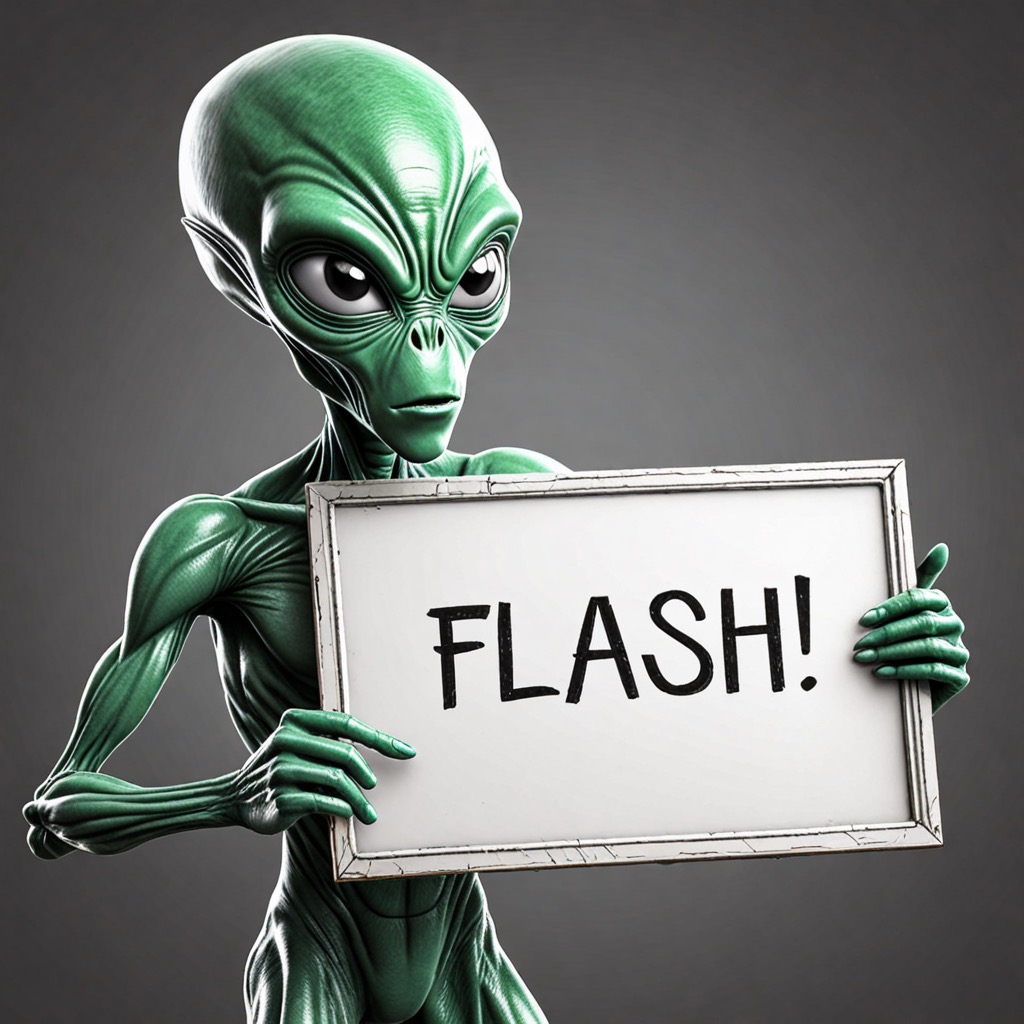speedy-sdxl-test
Maintainer: daanelson

2

| Property | Value |
|---|---|
| Model Link | View on Replicate |
| API Spec | View on Replicate |
| Github Link | No Github link provided |
| Paper Link | No paper link provided |
Create account to get full access
Model Overview
speedy-sdxl-test is a text-to-image model created by daanelson that is intended to be faster than the original SDXL model. It shares similarities with other SDXL-based models like SDXL-Lightning by ByteDance, SDXL v1.0 by lucataco, and SDXL Custom Model by alexgenovese. However, the maintainer's focus with this model is on improving generation speed.
Model Inputs and Outputs
speedy-sdxl-test takes a text prompt as the main input, along with various optional parameters to control things like the image size, number of outputs, guidance scale, and more. The model then generates one or more images based on the provided prompt.
Inputs
- Prompt: The text prompt describing the desired image
- Negative Prompt: An optional text prompt describing what should not be included in the image
- Width: The desired width of the output image, in pixels
- Height: The desired height of the output image, in pixels
- Num Outputs: The number of images to generate (up to 4)
- Scheduler: The algorithm used for the diffusion process
- Guidance Scale: The scale for classifier-free guidance
- Num Inference Steps: The number of denoising steps to perform
- Seed: An optional random seed to use for reproducibility
Outputs
- Output Images: One or more generated images, returned as a list of image URLs
Capabilities
speedy-sdxl-test is capable of generating high-quality images from text prompts, similar to other SDXL-based models. The focus on speed improvements may make it a good choice when you need to generate images quickly, such as for prototyping or demos.
What Can I Use It For?
With speedy-sdxl-test, you can create a variety of visuals to support your projects or ideas, such as product mockups, illustrations, and more. The model's speed could be especially useful in scenarios where you need to generate images rapidly, like for social media content or design workflows. As with other text-to-image models, the results will depend on the quality and specificity of your prompts.
Things to Try
Try experimenting with different prompts and parameter settings to see how they affect the generated images. You could also compare the speed and quality of speedy-sdxl-test to other SDXL-based models to see how it performs. Additionally, you might explore ways to integrate the model into your existing workflows or applications to streamline your image generation processes.
This summary was produced with help from an AI and may contain inaccuracies - check out the links to read the original source documents!
Related Models

sdxl-lightning-4step

177.7K
sdxl-lightning-4step is a fast text-to-image model developed by ByteDance that can generate high-quality images in just 4 steps. It is similar to other fast diffusion models like AnimateDiff-Lightning and Instant-ID MultiControlNet, which also aim to speed up the image generation process. Unlike the original Stable Diffusion model, these fast models sacrifice some flexibility and control to achieve faster generation times. Model inputs and outputs The sdxl-lightning-4step model takes in a text prompt and various parameters to control the output image, such as the width, height, number of images, and guidance scale. The model can output up to 4 images at a time, with a recommended image size of 1024x1024 or 1280x1280 pixels. Inputs Prompt**: The text prompt describing the desired image Negative prompt**: A prompt that describes what the model should not generate Width**: The width of the output image Height**: The height of the output image Num outputs**: The number of images to generate (up to 4) Scheduler**: The algorithm used to sample the latent space Guidance scale**: The scale for classifier-free guidance, which controls the trade-off between fidelity to the prompt and sample diversity Num inference steps**: The number of denoising steps, with 4 recommended for best results Seed**: A random seed to control the output image Outputs Image(s)**: One or more images generated based on the input prompt and parameters Capabilities The sdxl-lightning-4step model is capable of generating a wide variety of images based on text prompts, from realistic scenes to imaginative and creative compositions. The model's 4-step generation process allows it to produce high-quality results quickly, making it suitable for applications that require fast image generation. What can I use it for? The sdxl-lightning-4step model could be useful for applications that need to generate images in real-time, such as video game asset generation, interactive storytelling, or augmented reality experiences. Businesses could also use the model to quickly generate product visualization, marketing imagery, or custom artwork based on client prompts. Creatives may find the model helpful for ideation, concept development, or rapid prototyping. Things to try One interesting thing to try with the sdxl-lightning-4step model is to experiment with the guidance scale parameter. By adjusting the guidance scale, you can control the balance between fidelity to the prompt and diversity of the output. Lower guidance scales may result in more unexpected and imaginative images, while higher scales will produce outputs that are closer to the specified prompt.
Updated Invalid Date

stable-diffusion-speed-lab

3
stable-diffusion-speed-lab is an AI model developed by daanelson that accelerates the performance of the popular Stable Diffusion text-to-image generation model. Unlike the original Stable Diffusion model, stable-diffusion-speed-lab aims to generate images more quickly without sacrificing quality. This model can be particularly useful for projects or applications that require real-time image generation or processing. Model inputs and outputs stable-diffusion-speed-lab takes a text prompt as input and generates one or more corresponding images as output. The specific input parameters include the text prompt, a seed value for randomization, the number of images to generate, guidance scale for the model, and the number of inference steps to perform. The model outputs a list of image URLs representing the generated images. Inputs Prompt**: The text prompt describing the desired image Seed**: A random seed value to control the randomness of the generated images Scheduler**: The algorithm used to schedule the diffusion process Num Outputs**: The number of images to generate Guidance Scale**: The scale for classifier-free guidance Negative Prompt**: Text describing things the model should not include in the output Outputs Output**: A list of URLs representing the generated images Capabilities stable-diffusion-speed-lab shares many of the same capabilities as the original Stable Diffusion model, including the ability to generate a wide variety of photorealistic images from text prompts. However, the key difference is the focus on faster image generation, which can be particularly useful for applications that require real-time or near-real-time image processing. What can I use it for? stable-diffusion-speed-lab can be used for a variety of applications that require fast, high-quality image generation, such as interactive art installations, real-time virtual environments, or rapid prototyping of visual designs. The model could also be incorporated into applications that generate images on-the-fly, such as chatbots, game engines, or media production tools. Things to try One interesting aspect of stable-diffusion-speed-lab is the ability to fine-tune the model for specific use cases or domains. By adjusting the model's parameters, such as the number of inference steps or the guidance scale, users can potentially optimize the model's performance for their particular needs. Additionally, exploring different text prompts and combinations of input parameters can yield a wide range of creative and unexpected results.
Updated Invalid Date

sdxl-flash

167
sdxl-flash is a fast version of the SDXL text-to-image model created by chenxwh that produces higher quality images. It is similar to other SDXL-based models like sdxl-lightning-4step, speedy-sdxl-test, and sdxl-2004, which all aim to improve the speed and quality of the original SDXL model. Model inputs and outputs sdxl-flash takes a text prompt as input and generates a single image as output. The model allows you to customize the image size, guidance scale, and negative prompt to refine the output. Inputs Prompt**: The text prompt that describes the image you want to generate Width**: The desired width of the output image Height**: The desired height of the output image Guidance Scale**: A scale that controls the trade-off between sample quality and sample diversity Negative Prompt**: Text that specifies things you don't want to see in the output image Seed**: A random seed value to control the randomness of the output Outputs Output Image**: A single, high-quality image generated from the input prompt Capabilities sdxl-flash is capable of generating a wide range of photorealistic images from text prompts, including scenes, objects, and characters. The model's speed and quality improvements over the original SDXL model make it a compelling option for text-to-image generation tasks. What can I use it for? You can use sdxl-flash to create images for a variety of applications, such as: Generating illustrations, concept art, or promotional images for your business or creative projects Producing images for online content, social media posts, or blog articles Experimenting with different artistic styles and visual concepts by tweaking the input prompts Things to try Some interesting things to try with sdxl-flash include: Exploring the limits of the model's capabilities by generating images with highly detailed or abstract prompts Combining sdxl-flash with other image editing tools to create unique and compelling visual compositions Comparing the output of sdxl-flash to other text-to-image models like sdxl-betterup or sdxl-shining to see how they differ in terms of speed, quality, and creative expression.
Updated Invalid Date

sdxl-custom-model

1
sdxl-custom-model is a variant of the SDXL (Stable Diffusion XL) text-to-image AI model, developed by alexgenovese. This model includes enhancements such as Callback Adjust, which can provide additional customization and refinement capabilities compared to the original SDXL model. While the core functionality remains similar to SDXL, the custom modifications may offer unique advantages for certain use cases. Model inputs and outputs sdxl-custom-model is a text-to-image generation model, taking in a textual prompt and producing a corresponding image. The model's inputs and outputs are as follows: Inputs Prompt**: The textual description of the desired image to be generated. Seed Number**: A numerical seed value that can be used to control the randomness of the generated image. Negative Prompt**: A textual prompt specifying elements that should not be included in the generated image. Num Inference Steps**: The number of steps to be used in the image generation process. Guidance Scale**: The strength of the guidance signal used to steer the image generation towards the desired prompt. Denoising**: The strength of the denoising process applied to the generated image. Refiner**: A boolean flag to activate the Refiner module, which can potentially enhance the generated image. Lora URL**: A link to a LORA (Low-Rank Adaptation) model that can be used to further fine-tune the generation process. Outputs Generated Image**: The output of the model is a URI (Uniform Resource Identifier) that points to the generated image. Capabilities sdxl-custom-model can generate a wide variety of images based on textual prompts, similar to the capabilities of the original SDXL model. The custom enhancements, such as Callback Adjust, may provide additional control and refinement over the generated images, potentially allowing for more precise and tailored outputs. What can I use it for? sdxl-custom-model can be used for various creative and practical applications, such as: Generating concept art, illustrations, or visual assets for creative projects. Producing images for use in marketing, advertising, or social media content. Experimenting with different prompts and settings to explore the model's capabilities and find unique visual styles. Things to try When working with sdxl-custom-model, you can experiment with different combinations of input parameters, such as adjusting the Guidance Scale, Denoising, and Refiner settings, to see how they impact the generated images. Additionally, leveraging the provided LORA URL can open up opportunities for further fine-tuning and customization of the model's capabilities.
Updated Invalid Date